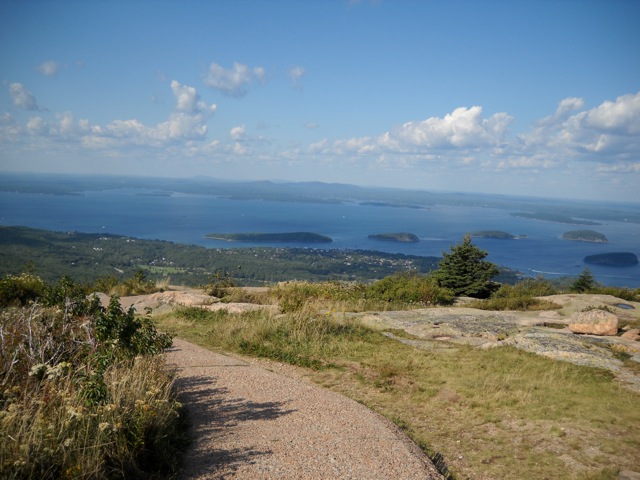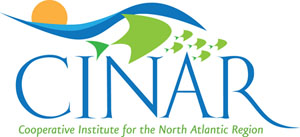Most people and scientists agree that climate change threatens coasts in many ways, starting with storm surges and sea level rise. But dealing with private, local, state and federal political entities can making finding and implementing solutions to protect the shore difficult.
However, coastal national parks are under the same threats as their private coastal counterparts and the National Park Service (NPS) has been working on ways to protect them for “more than a decade,” said Mary Foley, regional chief scientist for the NPS region from Maine to Virginia.
“It’s unusual for any one program to solve all the issues, ” said Foley, explaining that all the solutions are not purely scientific. “We are changing the way we manage dramatically in order to change our carbon footprint, and we’re making investments in clean technology over the next few years.”
The Secretary of the Interior (Ken Salazar) made it a high priority for any agency in Interior, so there’s a climate change strategic plan for NPS, said Foley.
“Ecosystems are very complex. Our number one priority will be, over time, to give a complete picture of that complex system in the national parks so NPS can better protect them.”
The park service is cooperating with other entities such as nongovernmental organizations (NGOs), including setting up landscape conservation cooperatives (LCCs) in an effort to plan across boundaries and maximize results. The North Atlantic Landscape Conservation Cooperative, for instance, will work from the Maritimes to North Carolina, where its jurisdiction overlaps a little with the South Atlantic LLC.
“There’s a new initiative funded for fiscal year 2010, we just need to develop a plan for how to move forward,” said Foley. “We don’t want to duplicate any efforts, such as those of the Gulf of Maine Council on the Marine Environment. we want to see what they do and see how we can facilitate it.”
Efforts start with basics such as “paying attention and adapting,” she added. “There are changes and projected changes we’ve paid attention to for decades, but we’re studying them and paying even more attention now.”
“It’s all about balancing,” Foley added. “While climate change is one of the top priorities for the agency, we have to balance visitor use with resource protection, as in how much snowmobiling do we allow, and the visual impacts of wind farms.”
Planned energy projects, such as a natural gas project for the Marcellus Shale Formation (New York to Virginia), would have an impact on several parks along the way, as would liquified natural gas (LNG) terminals proposed in northern Maine.
“A large concern is sea level rise and its projected accelerated rates,” Foley said. “We’re initiating a new study with the College of the Atlantic (COA) in Bar Harbor, Maine, to check sea level rise in the outer islands.” NPS has full or part ownership of more than 100 islands in Penobscot Bay with the potential for accepting ownership of more in parts of Hancock and Knox counties.
“Unlike coastal barrier islands that will move, the rocky islands will disappear, so we have concerns about sea bird habitat. This project will get us out to largely unexplored islands to see the populations that may be impacted,” said Foley.
NPS is equally concerned about the coastal barrier islands such as the Cape Cod National Seashore, and the wetlands behind them.
“We are setting up marsh monitoring with sediment elevation tables (SETs) to see the effects on marshes. We started one five years ago and we have added parks along the way,” said Foley. We don’t have a lot of information yet, but we’re seeing extensive marsh loss.”
Although it’s not part of the Gulf of Maine, Foley points out that the park service doesn’t just care for long uninhabited seashores. They have a major urban component as well, such as the little-known national park that rings New York Harbor. The Gateway National Recreation Area surrounds such urban areas as Queens, the Bronx and Staten Island.
Another cooperative effort aimed at protecting coasts is the cooperative ecosystems study units composed of multi-agency and multi-university cooperatives.
This year, COA joined the North Atlantic Coast Cooperative Ecosystem Study Unit based out of the University of Rhode Island. Already partnering in that ESU are the University of Maine at Orono, University of Massachusetts, Rutgers University, City University New York and Columbia University. Cornell is expected to join this year. Some federal agencies included in the same ESU are NPS, the Fish and Wildlife Service, the US Army Corps of Engineers, the Natural Resource Conservation Service and the new Bureau of Ocean Management (formerly part of the now-defunct Minerals Management Service. Its responsibilities are now divided between three different entities.)
“The intent of the collaboration is to partner with academics to solve resource issues,” Foley said. “This facilitates the ‘paperwork’ when we are able to engage in a collaboration with a formal agreement that supports and facilities it. That’s a tremendous help to agencies like NPS. It’s a worthy collaboration.”
“Climate change is the the number one issue of the day,” Foley added. “Focusing on it is the thing to do.”
Links:
National Park Service, Northeast Region
http://www.nps.gov/nero/
Cooperative Ecosystem Studies Units
http://www.cesu.psu.edu/
Landscape Conservation Cooperatives
http://www.fws.gov/science/shc/lcc.html
Nancy Griffin is the Gulf of Maine Times editor.
Print



















